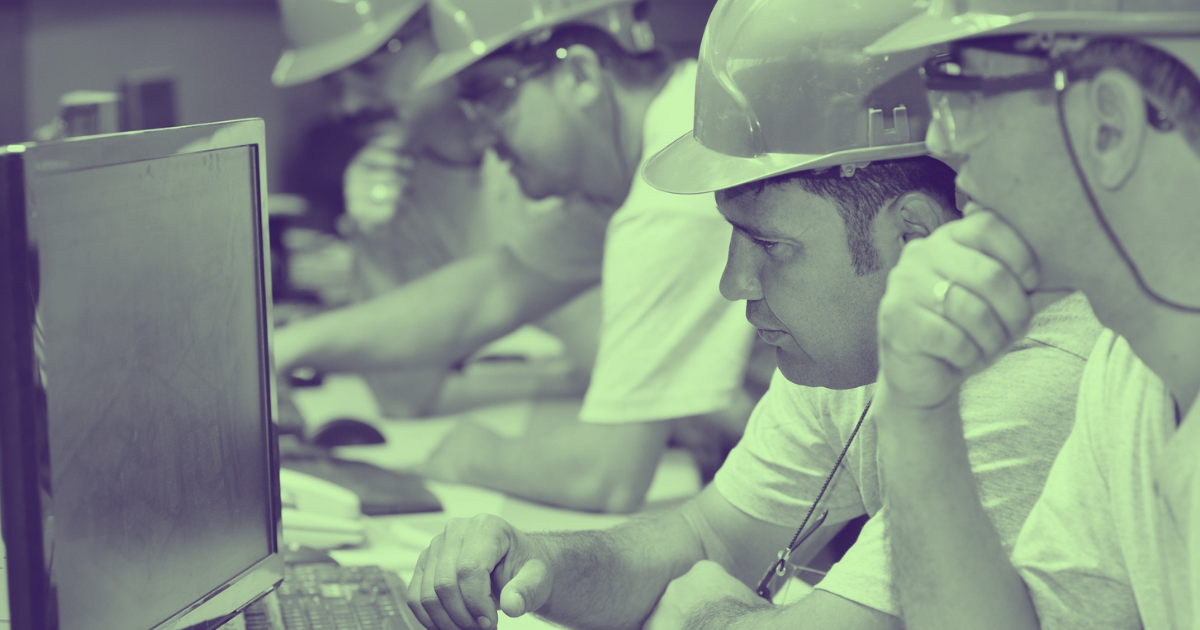
Manufacturers today face an enormous challenge when it comes to downtime and the costs associated with it. These costs accumulate rapidly, leading to an estimated $50 billion lost each year due to unplanned downtime.
Equipment failures alone contribute to 42% of this unplanned downtime, highlighting the urgent need for more effective maintenance strategies. To boost productivity and minimize operational expenses, many manufacturers are turning to advanced solutions like modern Computerized Maintenance Management Systems (CMMS).
During Empower 2024, Quickbase’s Josh Cranfill, General Manager, and Chad Ravancho, Manager of Solutions Consulting, delved into these pressing issues, discussing how modern CMMS applications offer streamlined, user-friendly maintenance solutions that significantly reduce downtime and boost labor efficiency.
Here are some key points from the conversation.
The Evolution of Maintenance Management
Traditionally, maintenance in manufacturing has been handled reactively, addressing issues only after equipment breaks down or shows performance problems. This method has major downsides, including higher downtime, increased maintenance costs, and inefficient use of labor. Additionally, reliance on manual data entry and fragmented communication system can cause delays and increase the likelihood of errors in maintenance operations.
As manufacturing processes have evolved, so has the need for a proactive maintenance strategy that addresses immediate issues and anticipates and prevents future breakdowns. This shift towards proactive maintenance is where CMMS emerges as a pivotal tool, leveraging technology to digitize and centralize maintenance operations within a single platform.
The Push for Modernization
In order to modernize maintenance processes, businesses need to first recognize the limitations of legacy systems that are already in place. Traditional systems often fail to integrate seamlessly with each other, leading to a disjointed approach where crucial information is scattered across multiple platforms. Data fragmentation slows the maintenance process and makes it difficult to track and analyze data effectively.
To address these issues, manufacturers need to focus on three critical areas: people, processes, and technology.
1. People: Empowering the Workforce
A knowledgeable and skilled workforce is crucial for effective maintenance operations. Yet, as experienced technicians retire, many manufacturers face the challenge of losing valuable "tribal knowledge." This issue is further complicated by the arrival of younger, less experienced workers who lack the same level of expertise.
Bridging this gap requires a focused effort to capture and share knowledge effectively. Training programs, easy access to digital manuals, and real-time communication tools can help ensure that all technicians, regardless of experience level, have the information they need to perform their tasks efficiently.
2. Processes: Streamlining Workflows
Streamlining maintenance workflows is crucial for reducing downtime. This involves mapping out the entire maintenance process, identifying bottlenecks, and implementing standardized procedures.
A key aspect of this is ensuring that data is accurately tagged and easily accessible. Manufacturers can improve visibility into maintenance activities and make more informed decisions, by centralizing information and creating a robust data foundation.
3. Technology: Enabling Proactive Maintenance
While the idea of predictive maintenance—where sensors and advanced analytics predict failures before they occur—is appealing, it requires a solid foundation of organized data and streamlined processes.
Investing in every new sensor or AI tool without first addressing underlying inefficiencies can magnify problems rather than solve them. Instead, manufacturers should focus on technologies that facilitate the organization and execution of maintenance activities, such as integrated CMMS platforms that bring together work orders, parts requisitions, and asset information into a single, cohesive system.
Must-Haves for an Effective CMMS
Many manufacturing plants face inefficiencies due to disconnected maintenance systems, forcing workers to navigate between disparate tools, cutting productivity. With experienced employees retiring, effective tech solutions are vital for bridging knowledge gaps and ensuring smooth operations. To get the most out of your employees and processes, here's what your CMMS needs to have:
- Centralized Asset Management:
- Single register for facility assets (equipment data, parts tracking, warranty info)
- QR code scanning for work order submission
- Integration with third-party systems for real-time data transmission
- Preventative Maintenance:
- Time-based preventive maintenance
- Auto-scheduling of preventive maintenance work orders
- Ensure timely and organized maintenance tasks
- Reporting & Analytics:
- Insights into key performance indicators (work orders, total costs)
- Helps identify machines for deprecation, replacement, or maintenance
- Informs decision-making based on total costs of ownership
- Efficient Work Order Management:
- Digital tracking of repairs, preventive maintenance, installations, and calibrations
- Reduces manual errors and improves workflow
- Custom form creation and integration with third-party systems
- Knowledge Management:
- Supports capturing and sharing essential procedures and best practices
- Addresses the loss of experienced technicians through digitized maintenance workflows
- Training, Documentation, and Real-Time Communication:
- The CMMS platform provides digital manuals and training resources, enabling real-time updates and collaboration to help new technicians bridge the knowledge gap and keep all team members informed, regardless of experience level.
Building a Future-Ready Maintenance Strategy
The journey to a more efficient and productive maintenance process begins with organizing workflows, tagging data accurately, and creating a robust data foundation. By focusing on these foundational elements, manufacturers can pave the way for more advanced predictive maintenance approaches in the future.
Ensuring that maintenance operations are efficient before introducing advanced automation technologies will help manufacturers realize the full potential of these innovations.




